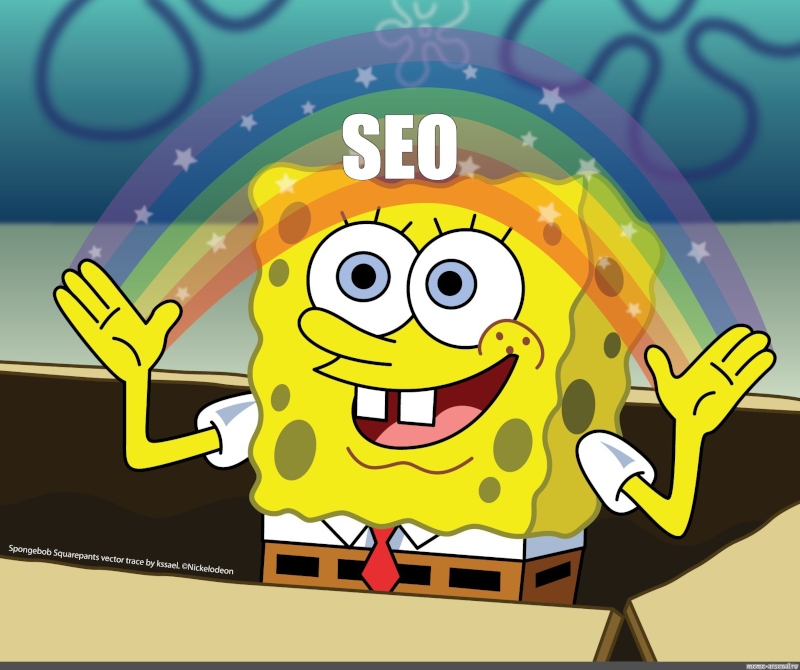You’ll often be told that the golden rule in digital marketing is to solidify your SEO strategy. While it’s true that the importance of good SEO should never be underestimated, excessive focus on SEO might create blinders that stop you from seeing the whole.
A better way to visualize the role of SEO is to think of it as a string that secures the seams of a bag containing a mix of digital marketing tools; it holds everything together, lending coherence and continuity to your marketing campaign. But alone, it lacks meat and oomph. In other words, SEO is crucial and often the basis of great marketing campaigns, but it certainly isn’t everything.
It would be a serious miscalculation to push through with a marketing campaign that utilizes a single strategy, such as relying on only SEO despite its significant impact. Work towards a marketing campaign that integrates a combo of marketing tools that works for your brand—and never settle for a standalone strategy.
In the end, SEO might still take up the most space in your marketing campaign, and that’s okay. The point is simply to complement it with other marketing tools available.
Finding the combination of marketing tools that best serve your brand might be a tedious process at first. Indeed, the list of what brands can do in digital marketing is a long one and can be overwhelming. To help you and your brand get a more organized start, this article identifies the tools that have already been tried, tested, and proven to be the best out there. Use these tools in conjunction with good SEO and see how they’re able to improve your brand’s online presence.
Content marketing
Content marketing covers all kinds of content published by a brand that’s intended to achieve all kinds of things. Forms of content marketing include but are not limited to videos, blog articles, social media posts, and website content. They can be used to promote a product or service, create engagement, attract new customers, or simply pique interest in a brand. Feel free to get creative with what you want to create and what you want your creations to accomplish.
Note that content marketing exists alongside SEO and one can’t reach maximum effectiveness without the other. A well-executed SEO strategy should lead customers to a brand’s content, acting like an usher directing them where to go so that they find exactly what they’re looking for. On the other hand, SEO won’t be necessary if there’s no content to be found in the first place.
Paid Media
Paid media is any kind of media that a brand spends money on. Online, we see this most often as advertisements that appear in search engine results as well as on social media platforms. Most frequently, brands utilize paid media if they want to increase brand awareness. By paying to increase visibility, they reach a wider audience which has its benefits. However, paid media has its shortcomings, the trickiest one of which is that customers know that brands pay to get promoted. Whether or not a brand is credible and legit or not, they’ll get the advertising space because it was paid for.
This is how SEO, the success of which is often measured through organic search, plays into the picture. Customers are more likely to trust brands that they discover on their own via their own search efforts. SEO and paid media are a good pairing to get the most of organic and paid results.
Ad Extensions
Ad extensions are incredibly popular because they’re easy to use, and have sizable payoffs. More so, they work well with SEO as they essentially extend SEO’s power. Even the best SEO has limited space (i.e.: there are only a limited set of keywords and phrases you can use, and also a finite space where you can feature them such as in your website, content URL, or meta tags). Ad extensions exist so that you can communicate more to your customers despite these SEO constraints.
Observe how the top results in search engines contain other details that are useful for customers at first glance: location and operating hours, contact numbers, a list of available products, price points, product features, and more.
SEO alone does not include this kind of information; it might be able to lead customers to your web page, but you still leave it up to them to discover if what you sell or offer is truly what they want. Therefore, SEO with ad extensions works best to send this message in a much more efficient way.
Pay-Per-Click
Pay-per-click marketing, or just PPC, is a system where a publisher (like a social media platform like Facebook or Instagram) is paid by a brand whenever a user clicks on an ad of theirs featured on their platform. PPC is used for driving traffic to a brand’s own web pages.
Just like paid media, PPC works in a similar way and has comparable issues when it comes to building brand trustworthiness. SEO picks up the slack in the same fashion by being the organic counterpart to a paid marketing tool.
Influencer Marketing
Influencer or personality marketing has established its place in digital marketing. For the most part, it helps give a brand a voice and humanizes it, while adding star power to the mix.
When thinking of how this works with SEO, influencers help by talking about what products and services they’ve used and approved of. Creating engaging and shareable content promoting the same achieves a similar effect. Fans learn what to search for online thanks to their idols raving over a brand.
Brand Management
Brand management is a broad term referring to any effort that increases the positive perception of a brand by customers. It can involve anything from making a brand’s visuals more attractive, highlighting good reviews, or giving a brand a personality so that it shines through every time there is customer interaction online.
This works well with SEO as it serves as a great follow-up. Once customers find you online thanks to a good SEO strategy, what then? The brand experience that follows should be memorable, as this is what gets them to stay and better yet, to come back time and time again.
Email Marketing
Finally, there’s good, old-fashioned email marketing that might seem basic, but can hold its own if studied thoroughly. Putting it side by side with SEO, email marketing communicates to customers what they can- and should be looking for when it comes to your brand. This cost-effective tool introduces them to your offerings as well as any promotions, collections, seasonal offerings, and discounts, therefore guiding them on what they should be Googling about you.
In conclusion, we see how SEO and the number of other marketing tools available should be used together as they enhance their benefits while also addressing blind spots. More than that, employing a well-rounded marketing campaign helps your brand score higher across more metrics that major search engines analyze. These metrics are used to determine if your brand deserves to be more visible and accessible to customers.
Develop a marketing campaign that is more responsive to and can better accommodate changes in the market and customer needs and tastes. Never forget that just as customers are multifaceted and regularly changing, your strategies must always be dynamic and capable of reflecting this.
If you want to learn more about digital marketing, you can listen and subscribe to our Spotify, Google, and Apple accounts. Webinar episodes are free to watch on Truelogic Inc. YouTube Channel.
Do you have a story for the WhenInManila.com Team? Email us at story.wheninmanila@gmail.com or send us a direct message on WhenInManila.com Facebook Page. Interact with the team and join the WhenInManila.com Community at WIM Squad! We also share our stories on Viber, join us!





